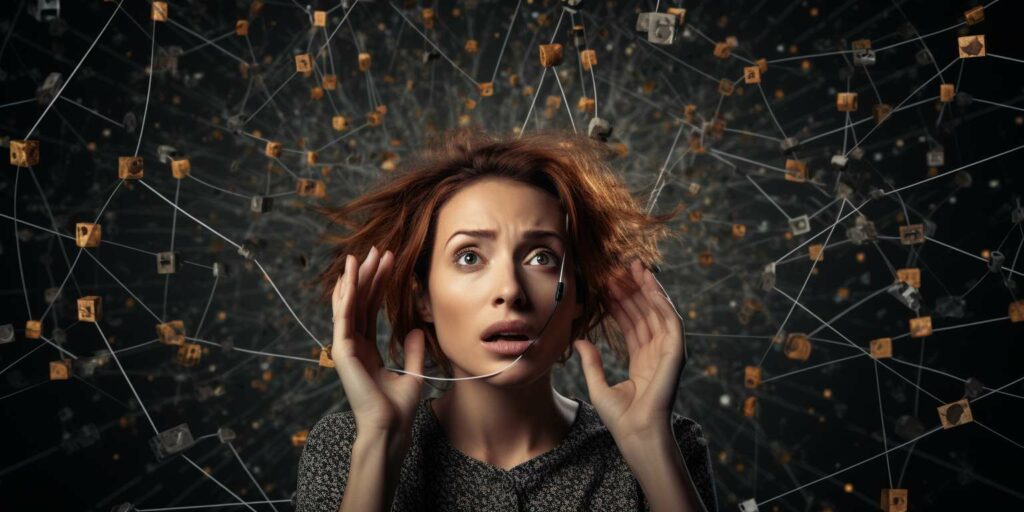The terms “subconscious” and “unconscious” often spark confusion in psychological discussions. While many use these words interchangeably, they represent distinct mental processes that uniquely shape human behavior, thoughts, and emotions.
Understanding the difference between the subconscious and unconscious mind isn’t just an academic exercise – it’s crucial for personal growth therapy and self-awareness. These mental states play vital roles in decision-making, memory formation, and emotional responses, yet they operate beneath our everyday awareness in fundamentally different ways.
The distinction between these two psychological concepts has evolved significantly since Sigmund Freud first popularized them in the early 20th century. Modern psychology continues to explore and define these mental processes, providing valuable insights into how they influence our daily lives and mental health.
Understanding the Terms: Subconscious and Unconscious
The subconscious and unconscious minds represent distinct levels of mental processing that influence human behavior in unique ways. These psychological concepts demonstrate how mental processes operate beyond immediate awareness.
Historical Origins and Development
Early psychoanalysts established the foundation for understanding mental processes beyond conscious awareness. In the late 1800s, Sigmund Freud introduced the concept of the unconscious mind, proposing it contains repressed memories, primal urges, and deep-seated emotional conflicts. Carl Jung expanded this framework by introducing the collective unconscious, suggesting humans share universal archetypes and inherited psychological patterns.
Modern Scientific Perspectives
Current neuroscience research distinguishes between subconscious and unconscious mental processes:
Subconscious Mind
- Functions just below conscious awareness
- Manages routine tasks like typing or driving familiar routes
- Stores accessible memories, beliefs, and learned behaviors
- Processes information in parallel with conscious thought
- Responds to conscious direction and training
- Operates at the deepest level of mental processing
- Contains repressed memories and primal instincts
- Influences behavior through unconscious motivations
- Manifests in dreams and automatic responses
- Requires specialized techniques like therapy to access
| Mental Process | Accessibility | Primary Functions |
|---|---|---|
| Subconscious | Readily accessible | Routine tasks, habits, immediate memories |
| Unconscious | Limited access | Deep memories, instincts, repressed content |
This scientific understanding highlights how both mental processes shape the human experience through different mechanisms and levels of accessibility.
Critical Differences Between Subconscious and Unconscious Mind

The subconscious and unconscious mind represent distinct levels of mental processing that influence human behavior in unique ways. These two aspects of the mind differ significantly in their accessibility, awareness patterns, processing mechanisms, and levels of control.
Accessibility and Awareness
The subconscious mind operates below conscious awareness, making it readily accessible through focused attention and mindfulness practices. It stores recent memories, learned behaviors, and immediate emotional responses that can be retrieved with minimal effort. In contrast, the unconscious mind exists deeper, containing repressed memories and primal instincts that remain inaccessible to direct conscious examination. These unconscious elements often surface through dreams, Freudian slips, or symbolic expressions.
Processing and Control
The subconscious mind systematically processes information, handling routine tasks like driving or typing without constant conscious attention. It responds to conscious direction and can be influenced through techniques such as visualization or affirmations. The unconscious processes information autonomously, operating beyond conscious control through instinctual responses and deeply embedded patterns. It influences behavior through automatic reactions, emotional triggers, and defense mechanisms independently of conscious awareness.
| Mental Aspect | Subconscious | Unconscious |
|---|---|---|
| Accessibility | Readily accessible with a focus | Deeply hidden, it requires special techniques |
| Processing Speed | Rapid, systematic | Automatic, instinctual |
| Control Level | Partial conscious control | Minimal to no conscious control |
| Content Type | Recent memories learned behaviors | Repressed memories, primal instincts |
The Role of Subconscious Mind in Daily Life

The subconscious mind acts as an autopilot system, managing routine tasks and processing information without conscious effort. It influences daily activities through established patterns stored from past experiences and learned behaviors.
Habits and Behaviors
The subconscious mind orchestrates automatic responses in everyday situations. It controls repetitive actions like:
- Typing on a keyboard without looking at individual keys
- Driving familiar routes while maintaining conversations
- Performing morning routines in a specific sequence
- Responding with social pleasantries such as “thank you” or “excuse me.”
- Maintaining posture during walking or sitting
Decision Making
The subconscious mind processes information faster than conscious thought, impacting quick decisions through:
- Gut reactions to immediate situations
- Emotional responses to environmental triggers
- Pattern recognition from past experiences
- Intuitive judgments in familiar scenarios
- Risk assessment based on stored memories
| Mental Process | Processing Speed | Capacity |
|---|---|---|
| Conscious Mind | 40 bits/second | Limited |
| Subconscious Mind | 20 million bits/second | Extensive |
The Unconscious Mind’s Influence on Human Behavior

The unconscious mind shapes behavior through deep-seated psychological processes beyond conscious awareness. These hidden mental processes manifest through various psychological mechanisms affecting daily actions, emotions, and thoughts.
Defense Mechanisms
Through unconscious psychological responses, defense mechanisms protect the conscious mind from uncomfortable thoughts and feelings. Common defense mechanisms include:
- Repression: Blocking distressing memories, thoughts, or desires from conscious awareness
- Projection: Attributing unacceptable feelings and thoughts to others rather than acknowledging them in oneself
- Displacement: Redirecting emotions from their original target to a less threatening substitute
- Denial: Refusing to accept reality or facts to avoid psychological distress
- Rationalization: Creating logical explanations for behaviors driven by unconscious motives
Dream Analysis
Dreams represent direct expressions of unconscious content manifesting during sleep through symbols, metaphors, and emotional experiences. Critical aspects of dream analysis include:
- Manifest Content: The literal remembered elements of dreams such as specific images, events, characters
- Latent Content: The hidden unconscious meanings behind dream symbols reflecting deeper desires and conflicts
- Universal Symbols: Common dream elements that carry similar psychological significance across cultures
- Personal Associations: Individual meanings attached to dream symbols based on unique life experiences
- Recurring Dreams: Persistent dream patterns indicating unresolved unconscious conflicts or concerns
The unconscious expresses itself through these mechanisms, affecting behaviors, emotions, and relationships without consciously recognizing their influence.
Practical Applications in Psychology and Therapy

Subconscious-Focused Techniques
- Cognitive Behavioral Therapy (CBT) modifies thought patterns stored in the subconscious mind to create behavioral changes in daily activities.
- Mindfulness Meditation increases awareness of subconscious patterns through focused attention on present-moment experiences.
- Habit Formation utilizes the subconscious mind’s role in automatic behaviors to establish new positive routines.
- Visualization Techniques program the subconscious mind with desired outcomes through repeated mental imagery.
Unconscious-Based Approaches
- Psychodynamic Therapy explores repressed memories stored in the unconscious mind to resolve deep-seated emotional conflicts.
- Dream Analysis interprets symbolic representations from the unconscious mind during sleep to uncover hidden meanings.
- Free Association allows unconscious thoughts to surface by speaking without conscious filtering.
- Hypnotherapy accesses the unconscious mind through altered states of consciousness to address underlying issues.
- Dual Processing combines conscious reasoning with unconscious intuition to enhance decision-making in therapeutic settings.
- Memory Recovery works with subconscious recall of recent events and unconscious access to repressed memories.
- Emotional Processing addresses surface-level reactions from the subconscious and deeper emotional patterns from the unconscious
- Behavioral Modification targets automatic responses stored in the subconscious while addressing unconscious resistance to change.
Takeaway
Understanding the distinction between the subconscious and unconscious mind is essential for personal development and psychological well-being. While these terms are often used interchangeably, their differences significantly impact how people process information, make decisions, and respond to their environment.
Modern psychology has moved beyond traditional Freudian concepts to develop practical applications that harness both mental processes. Whether through CBT, mindfulness, or psychodynamic approaches, these insights continue to shape therapeutic practices and self-improvement strategies.
The interplay between conscious awareness, subconscious processing, and unconscious influences creates a rich tapestry of human experience. By recognizing and working with these different levels of consciousness, people can better understand themselves and achieve meaningful personal growth.



